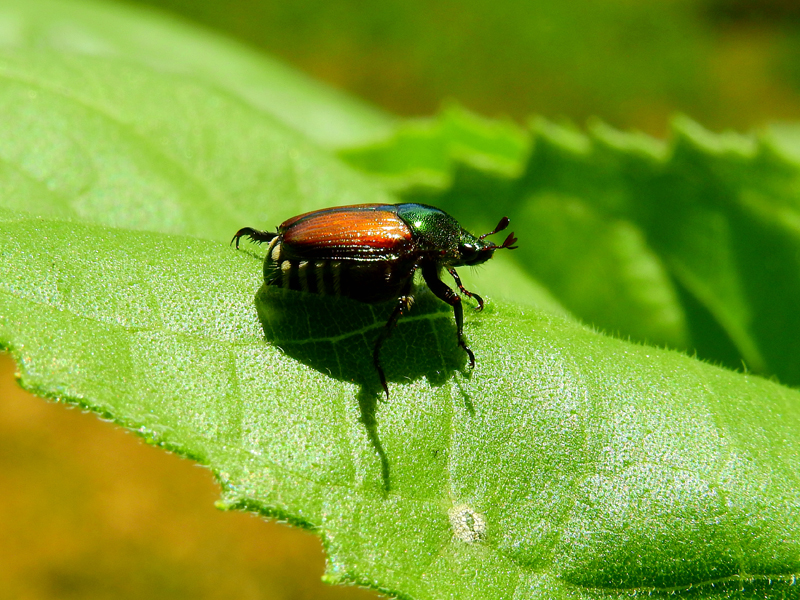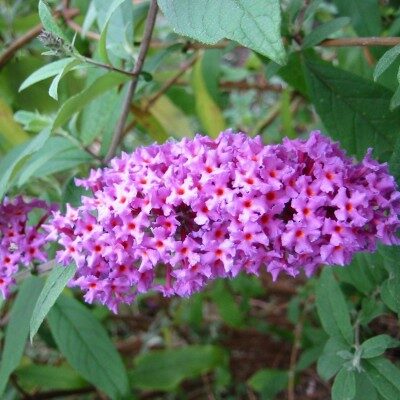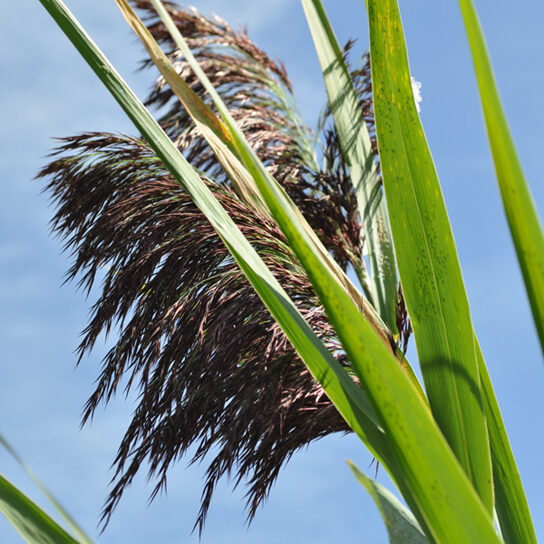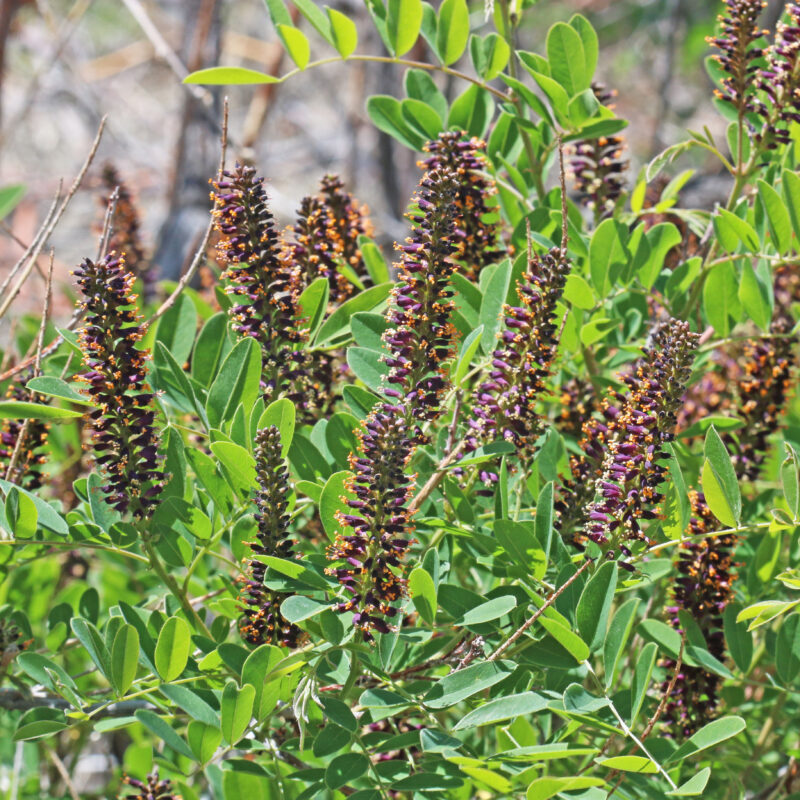Japanese beetles are a significant threat to crops, orchards, nurseries, landscape and garden plants, seedbeds, and turf grass. They often defoliate upper canopies first and can consume much of a plant’s leaves. Adult beetles forage on over 300 different species of plants. Some preferred plant species include ornamental flowers such as roses and sunflowers; agricultural crops such as berries, stone fruit, apples, grapes, hops, cannabis, corn, soybeans, and tomatoes; and trees such as oak and maple. The larvae eat turf grass roots and seedlings and roots of other plants such as corn, bean, tomato, and strawberries.
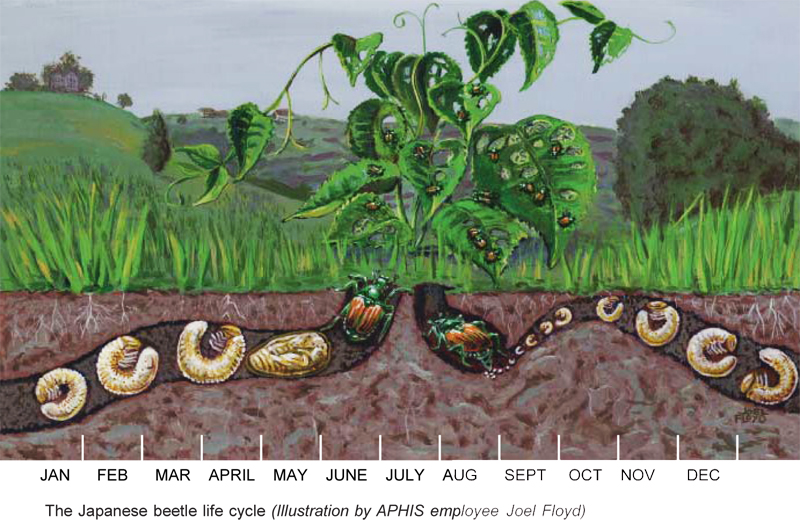
What they look like:
Adult Japanese beetles have metallic green thoraxes, coppery wing covers, and white hairy tufts (5 on each side of their abdomen, and 2 on the back behind their wing covers). Their C-shaped greyish white grubs (larvae) grow to 1” (2.5 cm) long and live in soil. Adults are oval and smaller than a dime, 3/8” (0.85-1.0 cm) long by <1/4” (0.6 cm) wide. Adults live for 30-45 days. A female can lay 40-60 creamy white eggs in the soil. They hatch in late June to early August. Both adults and grubs can be found clustered together.
Metallic beetles can be found in Oregon, but they do not share the same characteristic size, shape, or color. See a sample of native Oregon beetles.
Where they are found:
Japanese beetles were first found in New Jersey in 1916. They favor our climate and are not kept in check by a parasite found in its native habitat. They can be transported via roots and soil, and can fly up to 5 miles in the wind.
